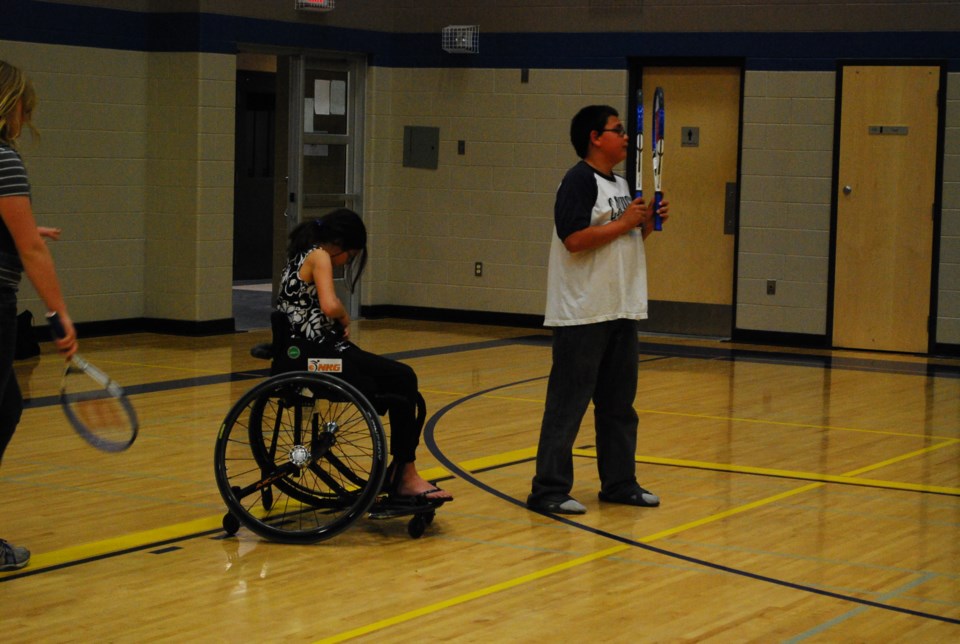To celebrate its 50th anniversary, the Saskatchewan branch of the Canadian Paraplegic Association (CPA) is visiting various communities around the province to introduce residents to wheelchair sports and raise awareness for people with disabilities.
Delynne Bortis with CPA and Leanne Schellenberg with the Saskatchewan Wheelchair Sports Association (SWSA) came to Humboldt Collegiate Institute (HCI) with a few sport wheelchairs to allow people to try out wheelchair basketball and tennis.
“It’s an awareness building thing,” Bortis said. “(CPA) wants members because it’s beneficial, but they also bring awareness to, I always say, the abilities of people with disabilities … A lot of people don’t even realize there‘s adaptive equipment. There are sports chairs so you can get out and still do things. That’s a big part of what wheelchair sports does.”
The sports chairs Schellenberg brought are slightly different from conventional wheelchairs: the wheels are tilted slightly to allow for more stability and to make quicker turns.
“It’s a lot of fun sitting in one of those chairs, as opposed to mine,” Bortis said. “They spin, they go really fast.”
“For people without a disability, it gives them a bit of an understanding of what it’s like to be in a chair and what it’s like to play sports in a chair. It also helps them realize that people who have disabilities can play sports at a very competitive level as well,” Schellenberg said. “It’s also important for people with disabilities to be active and stay fit; that helps with their independence and their overall quality of life.”
Other than the obvious fact that para-athletes are in wheelchairs, the rules are almost the same with just some minor differences. Para-athletes also have to be particularly careful about arm injuries since they propel the wheelchair, their primary mode of transportation.
Raising awareness for what it’s like to be in a wheelchair is important to Bortis because, she said, one of the main problems facing people with disabilities is lack of inclusion.
“(People don’t think about) community barriers. Inclusion (is important), so that everyone feels the support of the community,” she said.
This lack of inclusion is part of the reason CPA is going around to rural communities.
“A lot of them don’t have services and programs that are inclusive for everybody. (There are) physical barriers, attitudinal barriers, stuff like that,” Bortis said. “The best to know is they’re people who just want to be involved with their communities … attitudes are getting much better. People are realizing that those with disabilities are a part of the community, more so than it was. It’s more physical now. Get rid of your stairs! Build a ramp!”
She added that HCI was a “beautiful, accessible building,” but that not every building is. This can cause problems if someone in a wheelchair wants a certain job, but the building is inaccessible, for example. Other than the issue of just physically getting around, Bortis said sometimes attitudes towards people with disabilities need to change.
“Basically ... just talk to them like regular people,” she said. “It’s a lot to do with language, the way that people come across to you. I think everybody just wants to be treated like everybody else.”

